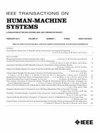在深度相机数据上使用 B$-样条模型预测人类不同运动水平的体力活动能量消耗
IF 4.4
3区 计算机科学
Q2 COMPUTER SCIENCE, ARTIFICIAL INTELLIGENCE
引用次数: 0
摘要
能量消耗(EE)通常用于量化体力活动。目前,能量消耗是通过惯性测量装置或深度摄像头收集的数据进行估算,并通过耗氧量数据进行验证。由于该系统的数据收集时间跨度不同,原始数据被分割成每分钟的窗口,并计算每个窗口的汇总统计数据。然而,使用汇总统计来汇总数据可能会受到冗余噪声的影响,或导致有价值的信息丢失。本文介绍了一种使用函数分析的建模方法,以描述所收集的骨骼数据的轨迹,从而有效利用完整的数据。接下来,骨骼数据的拟合值可与整体 EE 数据相匹配,并用于预测整体 EE 以及基于任务的 EE。研究结果表明,对于新陈代谢等效任务预测,拟议方法得出的均方根误差(RMSE)为 0.5 美元,平均绝对误差(MAE)约为 0.3 美元。用于估算基于任务的 EE(包括与站立和行走任务相关的 EE)的模型也显示出较低的 RMSE 值和 MAE 值。因此,在估计深度摄像系统中的 EE 时,建议的建模方法优于汇总统计方法。本文章由计算机程序翻译,如有差异,请以英文原文为准。
Using $B$-Spline Model on Depth Camera Data to Predict Physical Activity Energy Expenditure of Different Levels of Human Exercise
Energy expenditure (EE) is often used to quantify physical activity. Currently, EE is estimated with data collected by inertial measurement units or depth cameras and verified by oxygen consumption data. Due to the different data collection time spans in this system, raw data were split into minute-by-minute windows, and summary statistics for each window were computed. However, using summary statistics to aggregate data might be influenced by redundant noise or result in the loss of valuable information. This article presents a modeling method using functional analysis to characterize the trajectory of the collected skeletal data, thus enabling the effective use of the complete data. Next, the fitted values of the skeletal data can be aligned to the overall EE data and used to predict the overall EE as well as the task-based EE. The study results revealed for metabolic equivalent of task prediction that the root-mean-square error (RMSE) derived for the proposed method was
$< $
求助全文
通过发布文献求助,成功后即可免费获取论文全文。
去求助
来源期刊

IEEE Transactions on Human-Machine Systems
COMPUTER SCIENCE, ARTIFICIAL INTELLIGENCE-COMPUTER SCIENCE, CYBERNETICS
CiteScore
7.10
自引率
11.10%
发文量
136
期刊介绍:
The scope of the IEEE Transactions on Human-Machine Systems includes the fields of human machine systems. It covers human systems and human organizational interactions including cognitive ergonomics, system test and evaluation, and human information processing concerns in systems and organizations.
 求助内容:
求助内容: 应助结果提醒方式:
应助结果提醒方式:


